America’s wild horse round-up shame: Horrific footage shows animals being roped and dragged – with hundreds dying every year from traumatic injuries or dumped in ‘kill pens’ and sold for slaughter
Next to the bald eagle, the wild mustang is one of the greatest symbols of American freedom.
But charities are raising the alarm over the ‘egregious’ treatment of thousands of free-roaming horses rounded up and held by the Bureau of Land Management under a population management programme.
The nonprofit American Wild Horse Conservation (AWHC) estimates that hundreds of American wild horses die each year during roundups or are ultimately sold for slaughter through the unscrupulous adoption process.
Amelia Perrin from AWHC told DailyMail.com: ‘They are picked up by helicopter and taken to reception facilities where they languish for the rest of their lives. Horses die during roundups, they die while being held.”
Once caught, the Bureau puts the horses up for adoption and pays new owners $1,000 per horse, but AWHC says there are very few checks, meaning many of the horses end up in so-called ‘kill pens’ and are sold for the slaughter.
Charities sound alarm over ‘egregious’ treatment of thousands of free-roaming wild horses in America
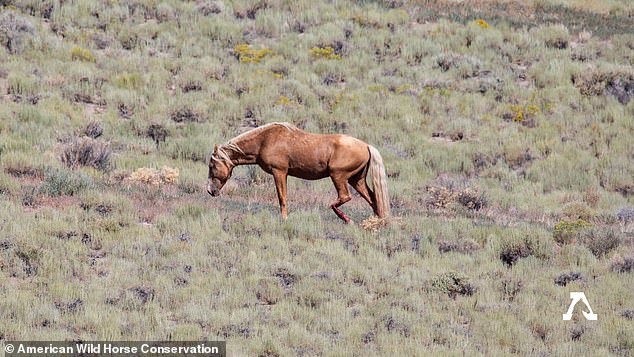
The nonprofit American Wild Horse Conservation (AWHC) estimates that hundreds of American wild horses die each year during roundups or are ultimately sold for slaughter through the unscrupulous adoption process
There are currently approximately 73,000 wild horses and burros living in the U.S. on vast tracts of land from Texas to Nevada and Oregon.
In 1971, they were granted federal protection and the Bureau of Land Management was tasked with maintaining their numbers at sustainable levels to “restore a thriving natural ecological balance.”
Since then, the Bureau has rounded up thousands of horses each year and transported them to boarding facilities, where they are put up for adoption or held indefinitely.
There are currently 64,000 horses and donkeys in stables in the US, costing taxpayers more than $100 million a year.
Charities have slammed the plan, citing videos of raids showing terrified horses and foals being chased by helicopters or ATVs.
One video, which emerged in January, showed wild horses being tied up and dragged through dirt by contractors hired to remove the animals from public land in Nevada.
The footage, obtained by Wild Horse Education, shows an animal being towed by an all-terrain vehicle. Another clip shows a helicopter nearly colliding with a herd as they try to avoid it.
Perrin told DailyMail.com: ‘It chases horses, which are prey animals, with a monster in the air, for an undisclosed number of kilometres. Babies are chased by helicopters to shelter facilities.
‘Many people die during the raid, they break their legs, their necks, and those deaths are not the only ones. The deaths don’t stop when the helicopters do.”
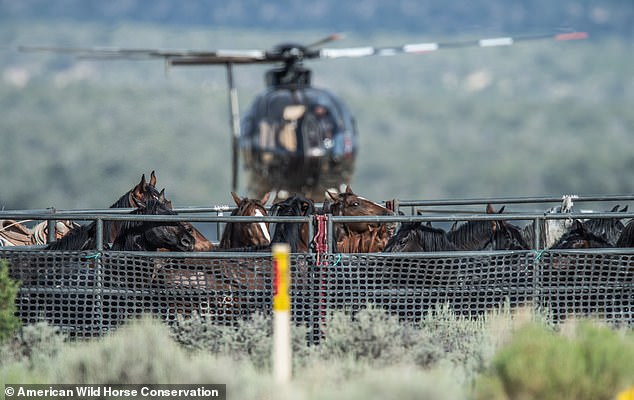
Shocking video of the raids has emerged, showing terrified horses and foals being chased by helicopters or ATVs
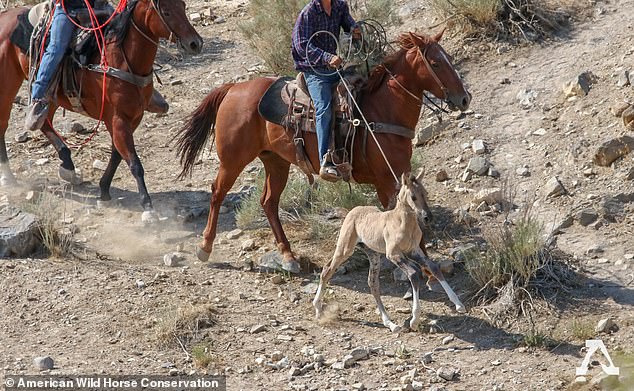
Perrin told DailyMail.com: ‘There are many deaths during the raid, they break their legs and their necks, these deaths are not the only ones.’
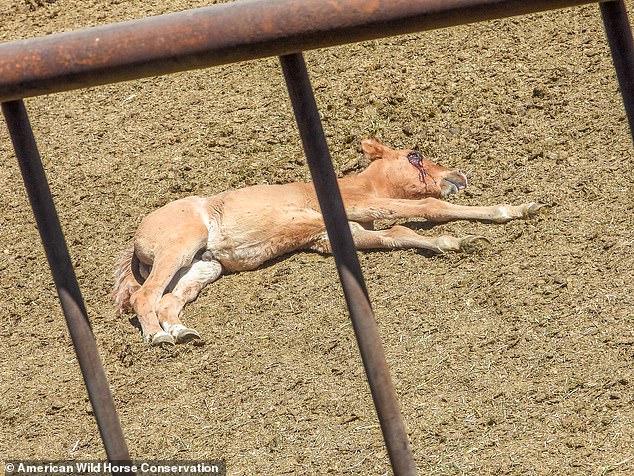
During a recent tour of an Agency shelter, the nonprofit said they saw “a dead or dying” foal lying in a pen.
Using Freedom of Information requests, the AWHC has also uncovered a pattern of deaths in detention facilities.
In April, the nonprofit revealed that 267 wild horses died in 2023 at the agency’s largest facility in Nevada, Fallon Off-Range Corral.
Of those, 106 died in their pens from unknown causes, 23 died before even reaching the facility, and 49 horses died from traumatic injuries.
During a recent tour of the facility, AWHC saw “a dead or dying baby” lying in a cage.
Perrin said: ‘They spend the rest of their lives separated from their families, from their freedom and put in these dirty cages. They don’t have sprinklers or shade, it’s shocking to see.”
There have also been disease outbreaks at the facilities, with AWHC reporting that 23 wild horses died in just 24 days last year due to suspected botulism poisoning at another Nevada holding facility.
In Colorado, they discovered a “shocking mass casualty event” in 2022 in which 145 unvaccinated wild horses died due to an outbreak of the equine flu virus.
Horses that survive are put up for adoption, with potential new owners paying $1,000 per horse if they keep them for a year.
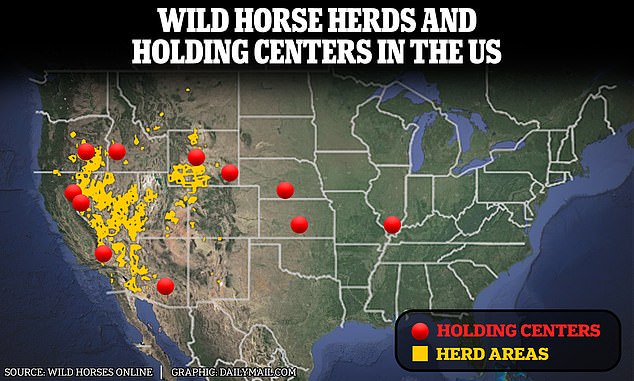
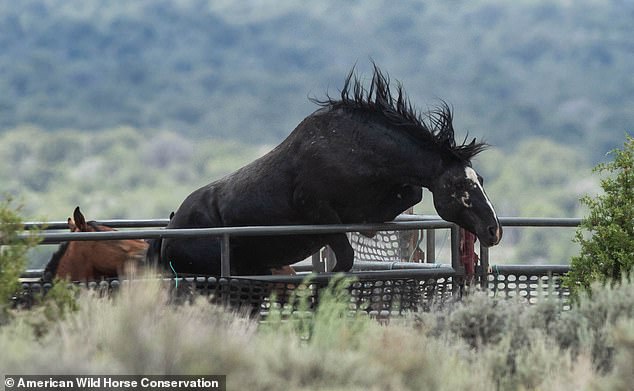
In April, the nonprofit revealed that 267 wild horses died in 2023 at the agency’s largest facility in Nevada, Fallon Off-Range Corral.
The problem, according to the AWHC, is that there is very little control over who can adopt the horses and where they end up.
Perrin said: “Thousands of horses have entered the slaughter pipeline and been taken to Mexico to be slaughtered and sold.
‘Worse, we have found groups of people conspiring to adopt massive numbers of horses and get the money to then sell them to slaughter.’
The charity said many of the adopted horses end up in so-called ‘kill pens’, where horses are sold en masse or loaded onto trucks and shipped to slaughter facilities in Mexico.
AWHC has documented more than 2,100 wild horses and burros in kill pens since 2019.
The kill pens share photos of the horses, with their Bureau brands visible, on social media with captions saying that if someone doesn’t step in to buy them, they’ll be “shipped to Mexico on the next truck.”
AWHC is calling for several changes to the Bureau’s program, including using fertility control to limit numbers while allowing horses to remain in the wild and removing financial incentives for adoption to prevent the system from being abused.
Perrin said the current system is “incredibly wasteful and cruel.”
She added: ‘They don’t view the wild horses as an integral part of the western landscape, they view them as livestock to be managed.’
DailyMail.com contacted Bureau of Land Management for comment.
